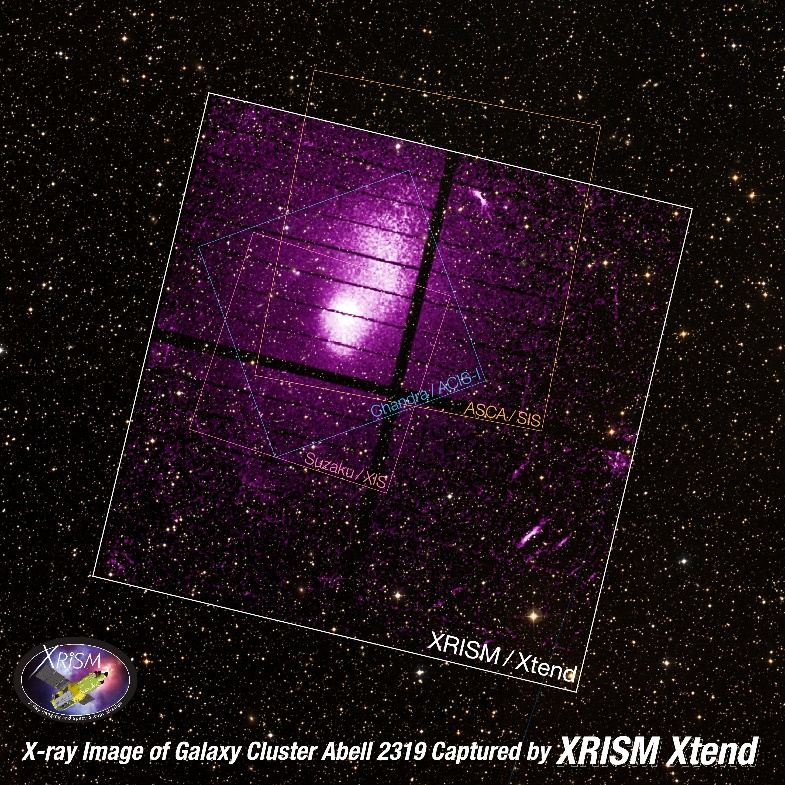The X-ray Imaging and Spectroscopy Mission (XRISM) is a space telescope launched in September 2023 and led by the Japan Aerospace Exploration Agency (JAXA), in collaboration with NASA with additional contributions from the European Space Agency. It will study some of the most violent and extreme phenomena in the universe, from intense outbursts from black holes and super-hot gas clouds surrounding galaxy clusters, to learn more about the evolution of the cosmos.
XRISM has released the first-glimpses of X-ray images of one supernova remnant N123D and one galaxy cluster Abell 2319. Here, we present the image of the galaxy cluster Abell 2319. The image below is a superposition of optical and X-ray observations.

Galaxy cluster Abell 2319 is a system where two clusters of galaxies collide about 770 million light-years away in the northern constellation Cygnus. The purple hues signify the distribution of high-temperature plasma emitting X-rays coming from the cluster. The XRISM imaging instrument Xtend’s unique capability to capture the entire cluster in a single observation, revealing the intricate distribution of hot gas associated with each cluster, promises a significant advancement in our comprehension of galaxy clusters and the Universe’s large-scale structure evolution.
The white box shows the field of view of the XRISM telescope that is the area of the sky that can observe at a single shot. For comparison, the fields of view of previous X-ray telescopes (Chabdra, Suzaku, ASCA) are shown. Observations were made from October 14 to October 24, 2023.
Source: JAXA, space.com
